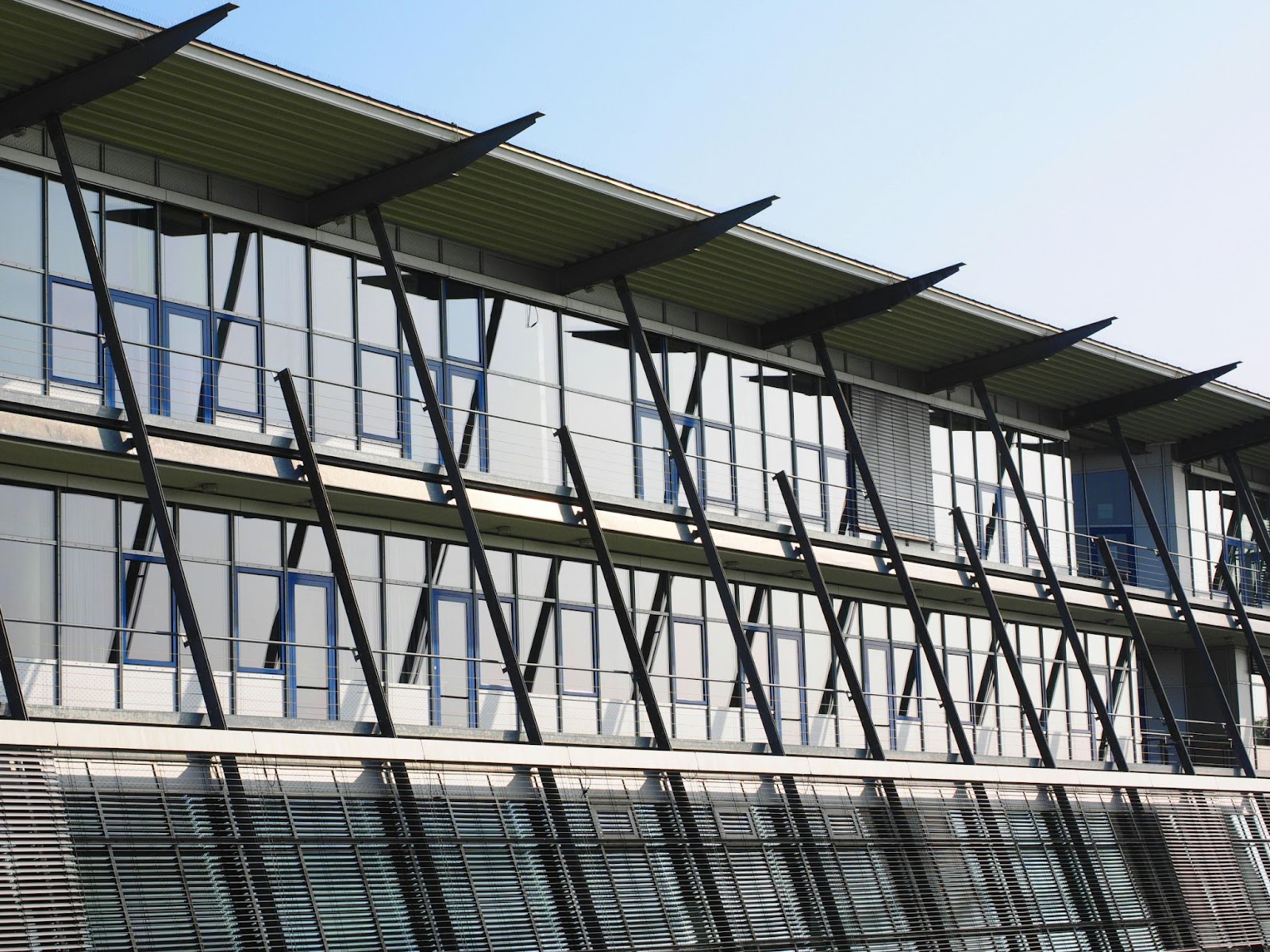Flames Vs. Glass Types: Is Tempered Glass Fire Rated?

Gain a comprehensive understanding of the fire rated glass safety implications of tempered glaze as we answer the question: Is tempered glass fire rated?
Envision a world in which glass and fire collide—a flaming confrontation! But what would happen if we put tempered glass—which is known for being strong and durable—up against a fire’s unrelenting flames? Due to its ability to strengthen itself through heating and cooling, tempered glass is the common type of fire rated glass used in buildings. But does tempered glass really meet building fire safety standards? Let’s look at whether tempered glass can withstand fire, an important factor to take into account while building a structure that impact safety.
Understanding The Properties Of Tempered Fire-rated Glass
Heat-treated to increase its strength and shatter-resistant qualities, tempered glass is a type of glass that is perfect for uses where safety is a top priority. Its small and largely innocuous fragments, when broken, lessen the chance of harm.
Strength
With its superior impact resistance, tempered glass finds vital applications in car windshields, smartphone screens, and safety glass applications where shatter resistance is crucial. Because of a heat treatment process that results in rapid cooling and creates surface compression and internal tension, tempered glass is up to five times stronger than regular glass.
Safety
Tempered glass is designed to shatter into tiny, less dangerous pieces when it hits something, reducing the chance of harm. Safety is crucial when using tempered glass in cars and buildings because it shields users from potentially harmful sharp fragments. Its use is required in some applications by a number of safety standards, including building codes and automobile regulations, in order to safeguard occupants and onlookers.
Heat Resistance
Because of the surface compression caused by the heat-strengthening process, tempered glass can withstand temperatures as high as 470°C (878°F). Its resilience to heat stress is increased as a result. Cookware, oven doors, fireplace screens, and other applications that require durability and radiant heat exposed areas commonly use it.
Quick Cooling
Forced air or liquid is cooled quickly during tempering, which gives the glass a balanced internal stress. This procedure increases the glass’s strength and resistance to breaking by up to five times. Because of its rapid cooling, tempered glass requires less time to anneal, which boosts manufacturing efficiency and makes it a reliable and affordable option for a range of applications.
Uniform Thickness
To create tempered glass, it must be heated evenly and quickly cooled to provide a constant thickness. In architectural applications, uniform thickness is essential for maintaining structural integrity and preventing distortions. It is perfect for these uses because it improves optical quality and lessens distortions for enhanced clarity in windows and glass doors.
Surface Hardness
Because tempered glass has a harder surface than ordinary glass, it is more resilient to abrasions and scratches. The molecular alterations brought about by the tempering process fortify the surface. This resilience is advantageous to the electronics and kitchen appliance industries, as it guarantees long-lasting, scratch-free screens and surfaces in their products.
Clarity
Crystal clarity is essential for high-end display screens and architectural glass, guaranteeing vibrant, distortion-free views and high-quality visual experiences. Tempered glass maintains optical clarity by going through uniform heating and cooling, minimizing distortions. It lacks the greenish tint typical of regular glass, improving visibility.
Resistance To Chemicals
Tempered glass is perfect for industries like chemical storage and laboratory equipment since it demonstrates high resistance to a variety of corrosive chemicals. Its resilience to chemical exposure guarantees long-term dependability and safety in situations where protection from corrosive materials is critical.
How To Verify Is Tempered Fire Rated Glass?
Since temperate glass breaks easily at high temperatures due to thermal shock, it is not naturally fire-rated glass. However, it may receive a restricted fire rating in some instances or when used in conjunction with fire-resistant materials as per building regulations or standards.
Examine the documents provided by the manufacturer, such as certifications and reports from fire tests, to confirm the fire rating of glass units. Make sure that they abide by the applicable building laws and industry requirements for fire safety.
Check Glass Product Documentation
To evaluate fire safety, product documentation from the glass manufacturer must be examined. To make sure a product is in accordance with the rules, look for a layer of glass fire resistance ratings, testing standards, and specifications. To ensure continuous safety and conformity to the codes of the glass product, it is imperative to have these documents on hand for future reference and inspections.
Consult The Manufacturer
Making contact with the glassmaker provides precise and current fire rating information. Inquire about testing procedures, accreditations, and product details while speaking with them. To make sure you get accurate information on fire safety, identify respected manufacturers through official websites or affiliations with the industry. These places also often have contact information.
Research Certification
A laminate glass product’s fire rating is verified by product certifications from accredited testing facilities or associations. Examine labels, marks, or serial numbers to confirm certificates, then cross-reference information from official websites or databases. UL, ANSI, and manufacturer websites are trustworthy sources of information that can be used to verify the legitimacy of certificates.
Check Local Building Codes
It is essential for fire safety to comprehend and abide by local construction codes. Local building authorities or municipal websites might provide access to these codes. Certain building types have requirements for fire-rated glass, such as fire-resistant barriers in residential contexts or exit doors for commercial buildings. Adhering guarantees security and adherence to the law.
Hire A Professional
It is advisable to use the services of a certified architect or fire safety consultant who specializes in glass goods and building codes. Seek out experience and credentials that are pertinent. Experts are especially useful for complex or large-scale projects since they guarantee correct evaluation and compliance with fire safety regulations. Their advice can guarantee safety compliance and avert expensive mistakes.
The Role Of Installation In Maintaining Glass Fire Rating
Glass fire ratings must be installed correctly because any imperfections or gaps might reduce the material’s fire resistance. Following the manufacturer’s instructions and using precise installation techniques guarantees that the glass functions as intended in the event of a fire.
Integrity Of Fire Barriers
Through the creation of a sealed, heat-resistant enclosure, proper installation of fire-rated glass maintains the integrity of fire barriers. In order to prevent breaches in fire-rated barriers, it is essential to choose the right types of fire-rated glass for certain applications. Maintaining the barrier system’s efficacy throughout installation requires addressing any potential weak spots or gaps.
Sealing And Gaskets
By keeping heat, smoke, and flames out of the system, seals and gaskets are essential to maintaining the fire rating of glass installations. Ineffective sealing methods, materials that expand when heated, like silicone, expanding strips, or intumescent gaskets, are often used to create a strong barrier against fire entry.
Frame Compatibility
Since frame compatibility directly affects performance, it is essential in fire-rated glass installations. Choosing frames that adhere to fire safety regulations guarantees a smooth fit with the selected glass, preserving fire resistance. In situations involving fire, properly matched frames offer structural support and improve the system’s overall integrity.
Regular Inspections And Maintenance
Maintaining the fire-rated glazing installations requires routine maintenance and inspections. Examine the frame’s condition, seal integrity, and cracks. It is imperative to swiftly attend to any signs of wear or damage in order to maintain fire resistance. The fire protection effectiveness of the glass system is maintained through timely repairs or replacements.
Compliance With Local Regulations
For the sake of public safety, it is imperative that installation procedures follow local fire safety codes. Failure to comply may lead to fines, legal repercussions, or even the termination of a project. By keeping up with local authorities, permits, and inspections, you can stay updated about rules and make sure that your glass installations adhere to fire safety compliance criteria.
Documentation And Labeling
For the sake of accountability and safety, fire-rated glass installations must have proper labeling and documentation maintained. Keep records of the fire ratings, certifications, and specifications provided by the manufacturer. Arrange and store this paperwork for convenient access so that it may be easily verified during inspections and for future reference, guaranteeing that fire safety regulations are satisfied.
Safeguarding Tomorrow With Ceramic Glass Better Than Tempered Glass Today!
When it comes to fire safety in your building, ceramic insulated glass units are the material of choice. Its superior strength and resistance allow for increased security with fewer restrictions on design and a longer lifespan than conventional tempered glass. Ceramic glass offers maximum protection against fire, smoke, heat, and flames associated with high-risk areas like exits and escape routes. With its performance exceeding that of regular tempered glass, ceramic glass is the perfect choice for ensuring fire safety in your building. Investing in state-of-the-art ceramic glass today will ensure a safer tomorrow for your building and its occupants. Get the fire-rated glass you need today and help us shape a better tomorrow.
Explore More News

Fire Rated Glass for Aircraft Interiors: Challenges and Solutions
Embark on a journey to elevate aviation safety to new heights with Liberty Shielding’s pioneering innovation – fire rated glass…

Fire Resistant Glass: Key Features and Applications in Manufacturing
Step into the realm where security harmonizes with innovation. Unveil the extraordinary attributes of our fire-resistant glass, meticulously crafted to…

Bullet-Proof Windows: Balancing Safety and Aesthetics
Step into the future of unparalleled security with Bullet-Proof Windows from Liberty Shielding. As the industry leader, we redefine safety…
